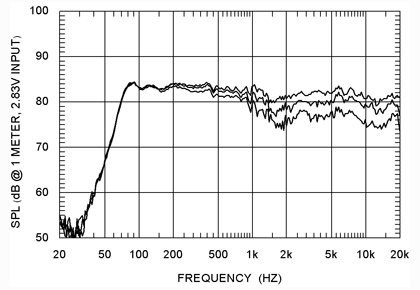Sorry, I started an OT discussion on someone elses thread (yes...me bad  ) and I didn't want to continue to threadjack so I decided to start this thread.
) and I didn't want to continue to threadjack so I decided to start this thread.
Last post below.
Thanks again for your comments astrallite. Interesting definition of the term "bright". So you are saying that the term "bright" is mostly in reference to the rolloff characteristic of the speakers? So a bright speaker is one that is less directional? Or is this the differential rolloff characteristic between the highs and lows of a specific speaker? I always thought bright meant that you had greater strength from the highs than from the lows, though I am not sure if that is even the case since I often see speakers having relatively flat frequency curves being called bright or warm.
Yeah I agree the s520s are no beauties compared to many other speakers but the 170s just look downright ugly to me . I think maybe the Aperions are also similar in looks to the Ushers (when in piano black, which seems to be the ones that my wife likes). I like small speakers so the Intimus 4B do look enticing. Oh well I don't have to worry about this for another year or so. I am still curious what price the Sierra 0.5 and the Swan D1.1SE will be priced at.
. I think maybe the Aperions are also similar in looks to the Ushers (when in piano black, which seems to be the ones that my wife likes). I like small speakers so the Intimus 4B do look enticing. Oh well I don't have to worry about this for another year or so. I am still curious what price the Sierra 0.5 and the Swan D1.1SE will be priced at.
Last post below.
Bright typically means the frequency response at 30 degrees (or more) more closely resembles that of the on-axis performance. Almost nobody sits on-axis since the typical person arranges their speakers more for decor than performance (and not stand around with a radioshack mic to find where the speakers need to be positioned to be perfectly-on axis).
So in effect, almost everyone is listening to their speakers off-axis, where dispersion characteristics of their tweeter effects how much the treble rolls off. If you took a series of bookshelf speakers from a dozen brands with relatively flat on-axis FR (but with wildly different off-axis performance) and pointed them at your ears I guarantee you that you will find them all bright/forward sounding. So my understanding is very few people like the sound of neutral speakers, but rather speakers with a rolled off FR response.
One solution is to simply listen to speakers with their grills on if you want to reduced top end.
And oh yeah, the 170s are pretty ugly, especially with the grills off, although since they are so nondescript you could say they disappear pretty well into a room. (IMO the Ushers aren't really that great of lookers either but the cabinet finishes are better). I personally don't want to be distracted by looking at speaker drivers while I'm looking at something on the screen, so I typically use speakers with the grills on.
Thanks again for your comments astrallite. Interesting definition of the term "bright". So you are saying that the term "bright" is mostly in reference to the rolloff characteristic of the speakers? So a bright speaker is one that is less directional? Or is this the differential rolloff characteristic between the highs and lows of a specific speaker? I always thought bright meant that you had greater strength from the highs than from the lows, though I am not sure if that is even the case since I often see speakers having relatively flat frequency curves being called bright or warm.
Yeah I agree the s520s are no beauties compared to many other speakers but the 170s just look downright ugly to me
![[H]ard|Forum](/styles/hardforum/xenforo/logo_dark.png)




